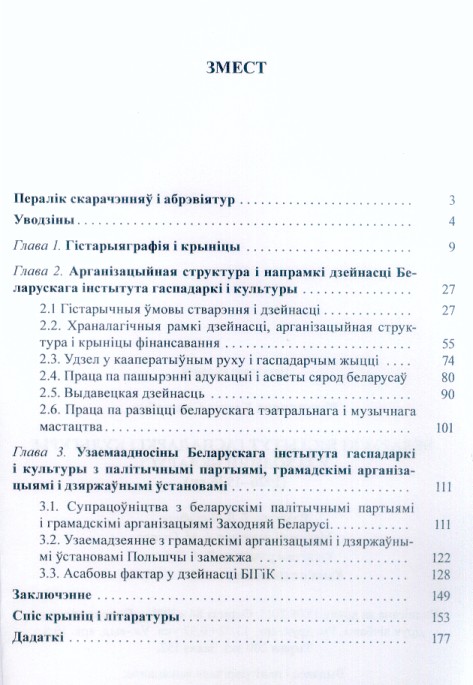Biblioteka Uniwersytecka
"Nie mehr eine Politik über Polen hinweg" : Willy Brandt und Polen
Publisher
Location
»Nie mehr eine Politik über Polen hinweg« Zur Bedeutung Willy Brandts für die deutsch-polnischen Beziehungen. Einleitung . . 7
Willy Brandt - Ein Porträt . . 28
»Phase widerspruchsvollen Wandels«. Willy Brandts Entspannungspolitik und die deutsch-polnischen Beziehungen 1966-1974 . . 44
Deutsche (Neue) Ostpolitik aus polnischer Perspektive, 1966-1972 . . 70
Deutsch-polnische Beziehungen und das Problem der Entschädigung der polnischen NS-Opfer zur Zeit der Neuen Ostpolitik . . 97
Das deutsch-polnische Verhältnis zur Zeit der Entspannungspolitik aus Moskauer Sicht . . 138
Die DDR und Willy Brandts Ostpolitik . . 155
Willy Brandt und Polen aus Sicht der CDU/CSU-Opposition . . 169
Die gesellschaftliche Dimension der westdeutsch-polnischen Beziehungen in der Zeit der Neuen Ostpolitik . . 183
Zwischen Solidarität und Friedenssicherung. Willy Brandt und Polen in den 1980er Jahren . . 220
Willy Brandts Wegweisungen und Wirken für die deutsche Einheit . . 265
»Die deutsche Einheit - ein Schreckgespenst für Polen?« Podiumsdiskussion . . 286
ANHANG
Abkürzungen . . 328
Personenregister . . 331
Bildnachweis . . 335
Die Autoren . . 336
Von Mazowiecki zu Tusk : Solidarität europäischer Christdemokraten mit Polen
Publisher
Location
Jacques Santer: Zum Geleit . . 6
Wilfried Martens: Grußwort . . 7
Joseph Daul: Grußwort . . 9
Europa - Vision und Realität . . 11
Polen nach dem Ersten Weltkrieg - Vom Chaos zur Demokratie . . 23
Europa nach 1945, Brücken gesprengt . . 29
Vier Phasen des EVP-Brückenbaus nach Polen . . 34
Reisen von Dr. Egon A. Klepsch . . 61
Als der Eiserne Vorhang rostete . . 81
Durch eine Tür mit Namen „Dziekania" . . 96
Zwischenbilanz: Unter Zeitdruck zu Kaczynskis „Sammlung" . . 110
Rückbesinnung auf den Start . . 120
Positionen nach der Trennung von der Kaczynski -Gruppe . . 136
Rückkehr der vereinigten polnischen Linken an die Macht . . 141
Partner Bürgerplattform (PO) und Volkspartei (PSL) . . 151
Im Minenfeld: Katholische contra „katholische" Gruppen . . 160
Europas Sozialdemokraten vor 1989 - kalte Schulter für Polen . . 173
Geschichte der Europäischen Volkspartei (Christdemokraten) . . 197
Die Krakauer Konferenzen . . 208
Nachdenken über Europa: Karl Josef Hahn, Władysław Bartoszewski, Erhard Busek . . 210
Polen auf der Tagesordnung der EVP - Daten . . 223
Bürgerplattform-Partei (PO) und Volkspartei (PSL) . . 226
Personenverzeichnis . . 229
Court of remorse : inside the International Criminal Tribunal for Rwanda
Publisher
Location
Geographic Landmarks . . viii
Historical Reference Points . . xi
Prologue . . 3
1. The Addis Ababa Departure Lounge . . 9
2. The Eagle Eye . . 15
3. At the First Judgment . . 20
4. Lines of Defense . . 32
5. The Fool's Game . . 38
6. Counting Up the Interahamwe . . 49
7. The White Man's Grave . . 58
8. A Little Murder among Friends . . 74
9. Opening Up Kibuye . . 78
10. Be like the Arab (Reason to Doubt) . . 83
11. Closing Up Shop . . 102
12. A Mayor in Turmoil (The Doubt in Reason) . . 115
13. The Principle of Ignorance . . 131
14. The Betrayal of the "Moderates" . . 136
15. Like a Flight of Termites . . 154
16. Loser's Justice . . 164
17. Giving and Taking Back . . 168
Acknowledgments . . 175
Notes . . 177
Index . . 185
Historia gospodarki odpadami we Wrocławiu : Album wydany z okazji jubileuszu 60-lecia firmy WPO ALBA SA
Publisher
Location
Wprowadzenie . . 3
HISTORIA XIV-XIX w.
1. Jak to ze śmieciami we Wrocławiu było.. . . 8
HISTORIA 1945-2010
2. ZOM i MPO 1945-1960 . . 28
3. MPO 1960-1970 . . 36
4. MPO i MPSUK 1970-1980 . . 42
5. MPSUK 1980-1990 . . 50
6. WPO 1990-2000 . . 60
7. WPO i WPO ALBA 2000-2011 . . 70
8. Kim jesteśmy? . . 90
9. Co robimy dla miasta i lokalnej społeczności . . 108
10. Sponsoring i mecenat . . 114
Przypisy . . 118
Bibliografia . . 119
Podziękowania . . 120
Geschichte der Abfallwirtschaft in Wrocław : Album zum 60. Jubiläum der Firma WPO ALBA SA
Publisher
Location
Vorwort . . 3
GESCHICHTE DES 14.-19. JAHRHUNDERTS
1. We es einmal mit dem Müll in Breslau war... . . 6
GESCHICHTE 1945-2011
2. ZOM und MPO 1945-1960 . . 14
3. MPO 1960-1970 . . 18
4. MPO und MPSUK 1970-1980 . . 20
5. MPSUK 1980J-1990 . . 24
6. WPO 1990-2000 . . 28
7. WPO und WPO ALBA 2000-2011 . . 34
8. Wer sind wir? . . 42
9. Tätigkeit für die Stad und die lokale Bevölkerung . . 52
10. Sponsoring und Förderung . . 55
Liste der Bilder und Illustrationen aus der polnischen Version des Albums . . 56
Fußote . . 62
Bibliografie . . 63
Danksagung . . 64
Gewerkschaften und kollektives Arbeitsrecht in Polen : Wechselbeziehungen im geschichtlichen Kontext
Publisher
Location
Abkürzungsverzeichnis . . 15
Verzeichnis der Organisationen und politischer Parteien . . 19
1. Teil: Einführung . . 23
I. Leitgedanken . . 23
1. Gegenstand, Zielsetzung und Thesen der Arbeit . . 23
2. Gang der Darstellung . . 26
3. Überlegungen zur Methodik . . 29
2. Teil: Gewerkschaften und kollektives Arbeitsrecht im historischen Funktionswandel . . 35
II. Gewerkschaften . . 35
1. Deutschland . . 36
2. Polen . . 40
III. Kollektives Arbeitsrecht . . 46
1. Begriff des kollektiven Arbeitsrechts . . 46
2. Koalitionsrecht und Tarifvertragsrecht . . 51
3. Arbeitskampfrecht und Schlichtung . . 57
4. Mitbestimmungsrecht . . 65
5. Funktionen des kollektiven Arbeitsrechts . . 69
IV. Wechselbeziehungen . . 70
3. Teil: Historische Grundlagen . . 73
V. Überblick über die historische Entwicklung der polnischen Gewerkschaftsbewegung (1902-1980) . . 73
1. Vorbemerkungen . . 73
2. Beginn der polnischen Gewerkschaftsbewegung und die Entwicklung bis zur Erlangung der Unabhängigkeit (1902-1918) . . 73
3. Zeitraum der Zweiten Republik (1918-1939) . . 77
4. Der Zweite Weltkrieg und Entstehung der Volksrepublik Polen (1939-1956) . . 85
5. Volksrepublik Polen (1956-1980) . . 103
VI. Implementierung rechtlicher Bestandschutz- und Betätigungsregeln für Gewerkschaften bis 1980 . . 105
1. Vorbemerkungen . . 105
2. Entstehungsphase des polnischen kollektiven Arbeitsrechts (1918-1944) . . 107
3. Phase der relativen Stagnation (1945-1980) . . 137
VII. Zwischenergebnis . . 145
4. Teil: Die polnische Gewerkschaftsbewegung und die Entwicklungen in der Umbruchphase 1980-1989 . . 149
VIII. Bedeutung der Protestbewegung der Jahre 1980/81 für die gegenwärtige Gestalt des polnischen Arbeitsrechts . . 149
1. Die Genese von Solidarność . . 149
2. Die Streikpostulate und das Danziger Abkommen (August 1980) . . 153
3. Kampf um die Koalitionsfreiheit . . 160
4. Katholische Soziallehre und die Rolle der katholischen Kirche . . 170
IX. Gesetzliche Folgen und Einfluss dieser rechtlichen Rahmenbedingungen auf die Gewerkschaftsbewegung . . 187
1. Die Gesetze vom 25. September 1981 über staatliche Unternehmen und die Selbstverwaltung der Belegschaft sowie ihre Folgen . . 187
2. Das Gewerkschaftsgesetz von 1982 und seine Folgen . . 207
3. Die Novelle des Arbeitsgesetzbuches 1986 . . 222
X. Dauerhafte Auswirkungen der Veränderungen auf die Arbeitsbeziehungen . . 232
1. Beurteilung der Gewerkschaftsrechte . . 232
2. Entstehung der bipolaren Gewerkschaftsstruktur . . 238
XI. Beratungen und Vereinbarungen des Runden Tisches 1989 . . 253
1. Der Weg zum Runden Tisch . . 253
2. Ergebnisse des Runden Tisches . . 262
XII. Zwischenergebnis . . 267
5. Teil: Entstehung des jüngeren kollektiven Arbeitsrechts in Polen nach 1990 und die aktuelle Situation der Sozialpartner in Polen . . 271
XIII. Entwicklung der jüngeren kollektivrechtlichen Normen . . 271
1. Organisatorische und politische Ausgangslage bei den Akteuren der Arbeitsbeziehungen . . 271
2. Wirtschaftliche Transformation und die Neuordnung des polnischen Arbeitsrechts . . 283
3. Transformation des polnischen kollektiven Arbeitsrechts . . 285
4. Auswirkungen der EU-Mitgliedschaft auf die Entwicklung des polnischen kollektiven Arbeitsrechts und auf die polnische Gewerkschaftsbewegung . . 405
XIV. Entwicklungen bei den Akteuren der Arbeitsbeziehungen und die aktuelle Lage des sozialen Dialogs . . 421
1. Entwicklungen auf der Arbeitgeberseite . . 421
2. Rolle und Bedeutung der Tripartistischen Kommission . . 433
3. Aktuelle Situation und Struktur der polnischen Gewerkschaftsbewegung . . 444
XV. Zwischenergebnis . . 453
6. Teil: Kollektives Arbeitsrecht in Polen im rechtsvergleichenden Blick . . 461
XVI. Zum Stand des kollektiven Arbeitsrechts in Deutschland - ein kurzer Überblick . . 461
XVII. Herausstellen der Gemeinsamkeiten und Unterschiede des polnischen zum deutschen kollektiven Arbeitsrecht . . 465
1. Koalitionsrecht und Arbeitgeberfreiheit . . 465
2. Tarifvertragsrecht im gesellschaftlichen Kontext . . 477
3. Arbeitskampfrecht . . 491
4. Mitbestimmungsrecht . . 505
XVIII. Aspekte der künftigen Entwicklung des polnischen Arbeitsrechts . . 510
7. Teil: Zusammenfassung der Ergebnisse . . 519
Literaturverzeichnis . . 527
Verzeichnis polnischer Rechtsquellen . . 571
Anhang . . 591
Zeittafel . . 593
Wichtigste gesellschaftliche Proteste in Polen 1945-1974 . . 593
Chronologie der für die Thematik wichtigsten Ereignisse in Polen 1975-2007 . . 594
Teatr epohi peremen v Pol'še, Vengrii i Rossii : 1990-e-2010-e gody
Publisher
Location
Belaruskì Ìnstytut Gaspadarkì ì Kul'tury u Zahodnâj Belarusì (1926-1936 gg.)
Publisher
Location

Rediscovering traces of memory : the Jewish heritage of Polish Galicia
Publisher
Location
Prologue . . 2
Map of Polish Galicia . . 10
Introduction . . 12
1 Jewish Life in Ruins . . 27
2 Jewish Culture as It Once Was . . 44
3 The Holocaust: Sites of Massacre and Destruction . . 65
4 How the Past is Being Remembered . . 88
5 People Making Memory Today . . 117
Epilogue . . 132
A Note on Galicia, Place Names, and Sources . . 134
Background Notes . . 136
Bibliography . . 175
Index . . 183
Roman Gods : a conceptual approach
Publisher
Location
Acknowledgements . . vii
List of Illustrations . . ix
Introduction . . 1
Chapter One - Constituent Concepts . . 11
1. Space . . 11
2. Time . . 30
3. Personnel . . 51
4. Function . . 66
5. Iconography . . 88
6. Ritual . . 103
Chapter Two - Conceptualization . . 117
1. Adoption . . 117
2. Deification . . 127
3. Differentiation . 132
4. Dissolution . . 142
Chapter Three - A Test Case: The Secular Games of 17 B.C. . . 147
1. Celebrations . . 147
2. Carmen Saeculare . . 159
Chapter Four - Concepts and Society . . 167
1. The Elite . . 168
2. The Underprivileged . . 177
3. Women . . 181
Chapter Five - Conclusions . . 187
Bibliography . . 195
Index . . 211
